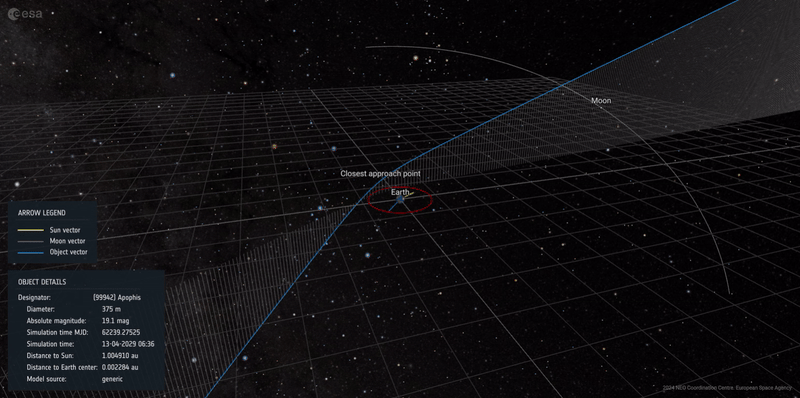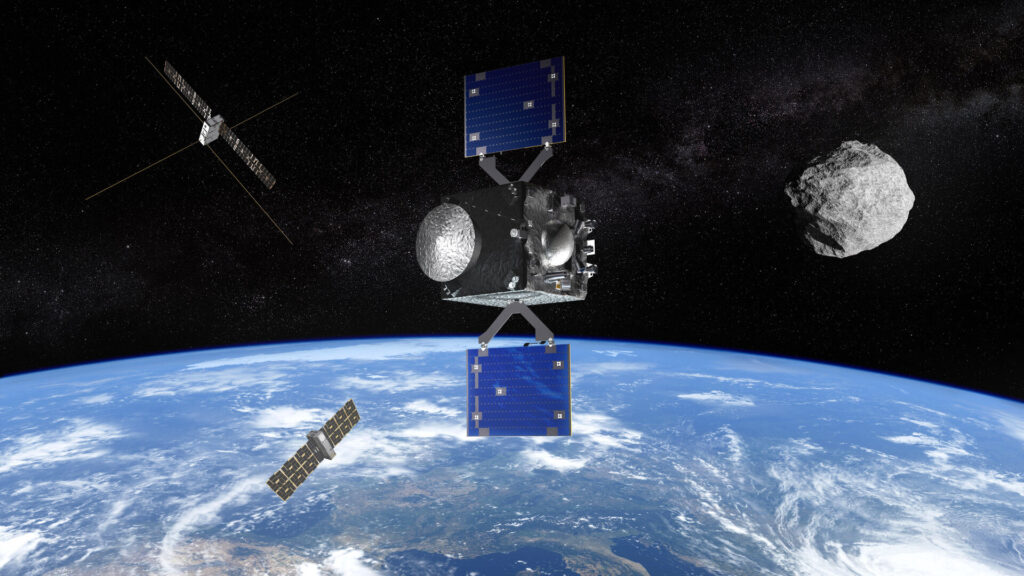The European Space Agency announced a project of the Ramses mission (Rapid Apophis Mission for Space Safety). Its target will be the asteroid Apophis, which will make a record close approach to the Earth in 2029.
Convergence every 10,000 years
Apophis was discovered in 2004. Its diameter is about 340 meters. On April 13, 2029, it will make a close flyby of the Earth, passing at a distance of 32,000 km from its surface (i.e. inside the orbits of geostationary satellites). At that point, it will be visible in the sky to the naked eye across most of Europe and Africa, as well as parts of Asia.

An impending rapprochement is an extremely rare event. Yes, astronomers have found asteroids passing at a shorter distance from Earth, but they were also much smaller in size. Scientists estimate that objects like Apophis approach Earth at such a close distance on average only once every 5,000 to 10,000 years.
It’s no wonder there’s so much attention to the upcoming flyby. When Apophis was first discovered, it was worried that the Earth’s gravity would change its orbit so much that it would fall on our planet in 2036. We now know that this is not the case, and at least for the next hundred years, the asteroid is not a threat to us. At the same time, the convergence may affect Apophis. According to astronomers, landslides and ejections may occur on it. Therefore, ground-based telescopes will closely monitor the visit of the asteroid. But still, the best data will be provided by the spacecraft.
European mission to Apophis
Currently, mission designs to Apophis are being developed by a number of countries and private companies. Recently, ESA has joined them, announcing its intention to launch its own vehicle to Apophis. It was named Ramses.

Ramses will be launched in April 2028 and will reach Apophis in February 2029, two months before convergence. This will allow it to observe in real time any possible changes that will occur during the rendezvous with our planet. Scientists hope the spacecraft will be able to record earthquakes and landslides, allowing them to learn about the asteroid’s composition, internal structure, mass, density and porosity.
Such data have not only scientific but also practical value. Astronomers may well find an asteroid threatening our planet in the future — and in order to throw it off course, we need to understand how they are organized and how they will react to outside influences.
The Ramses project is currently in the pre-draft stage. A final decision on its financing and launch should be received at the November 2025 ESA Council of Ministers meeting.
According to ESA


